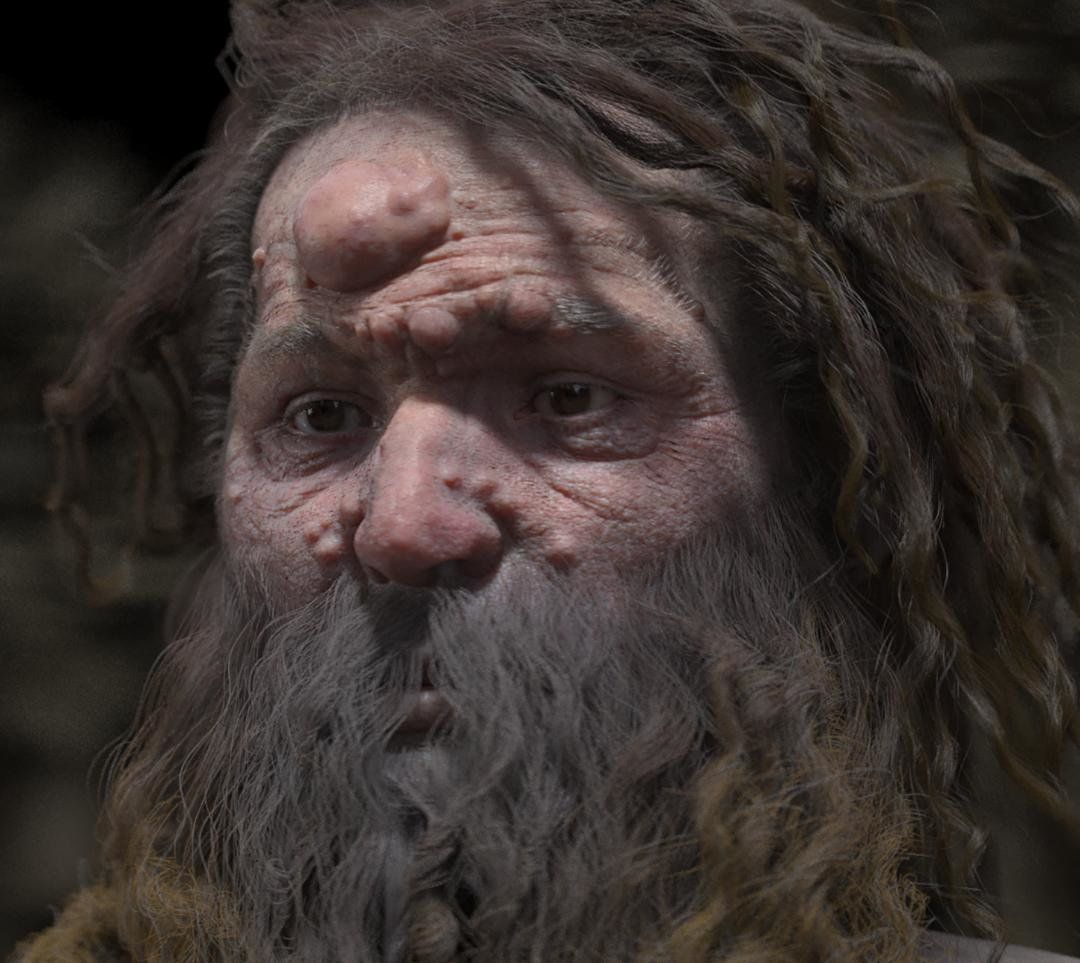
One of the oldest human skulls ever found, belonging to "Cro-Magnon 1," looked different than the skulls of other early humans. The middle-aged man, who lived 28,000 years ago, had a big dip in his forehead and pits in the bones of his face.
Previously, researchers thought that a fungal infection might have caused the marring. Now paleontologists think a skin condition called neurofibromatosis type 1 may have been to blame—and Cro-Magnon 1's face may have been covered in warts.
In 1868, paleontologist Louis Lartet discovered a skull in a rock shelter in Les Eyzies, France. This became one of the first fossil humans ever found. While the general shape of the skull isn't much different than that of a more modern man, the holes and dips in his face made Cro-Magnon 1 unique.
However, new research published in the journal The Lancet suggests that neurofibromatosis type 1, or NF1, is to blame. A medical CT scan and a micro CT scan showed details of these lesions that were consistent with "subcutaneous schwannomas," which are benign tumors.
When these tumors form, they create visible "warts." When they get big enough, they can affect the underlying bones. Occasionally they affect and damage facial structures as well, such as causing blindness by obstructing the eyes.
"His left ear canal was also damaged, presumably also by a tumour that had grown," anthropologist Philippe Charlier said in a statement. "He has them everywhere," he added.
This discovery comes more than 150 years after the skull was first found. To illustrate how the ancient man might have looked, an artist created a visual forensic reconstruction of Cro-Magnon 1, with small "warts" (actually representing tumors) and one large one on his forehead. The realistic facial model may be the closest we can come to seeing what one of our Cro-Magnon ancestors looked like.
Uncommon Knowledge
Newsweek is committed to challenging conventional wisdom and finding connections in the search for common ground.
Newsweek is committed to challenging conventional wisdom and finding connections in the search for common ground.
About the writer
Kristin is a science journalist in New York who has lived in DC, Boston, LA, and the SF Bay Area. ... Read more
To read how Newsweek uses AI as a newsroom tool, Click here.








